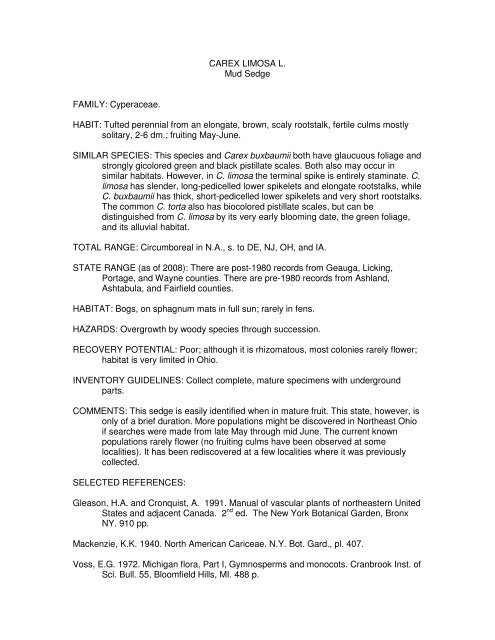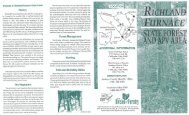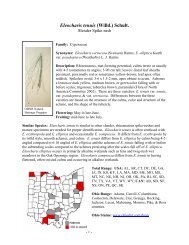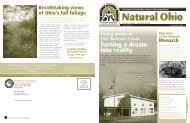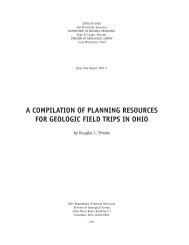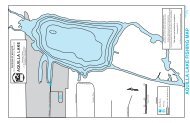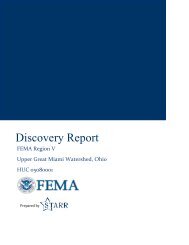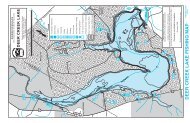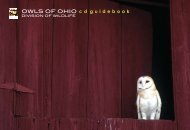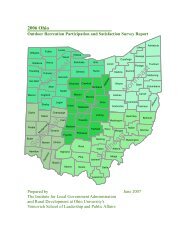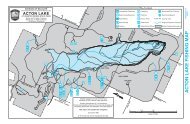CAREX LIMOSA L. Mud Sedge FAMILY: Cyperaceae. HABIT: Tufted ...
CAREX LIMOSA L. Mud Sedge FAMILY: Cyperaceae. HABIT: Tufted ...
CAREX LIMOSA L. Mud Sedge FAMILY: Cyperaceae. HABIT: Tufted ...
Create successful ePaper yourself
Turn your PDF publications into a flip-book with our unique Google optimized e-Paper software.
<strong>CAREX</strong> <strong>LIMOSA</strong> L.<strong>Mud</strong> <strong>Sedge</strong><strong>FAMILY</strong>: <strong>Cyperaceae</strong>.<strong>HABIT</strong>: <strong>Tufted</strong> perennial from an elongate, brown, scaly rootstalk, fertile culms mostlysolitary, 2-6 dm.; fruiting May-June.SIMILAR SPECIES: This species and Carex buxbaumii both have glaucuous foliage andstrongly gicolored green and black pistillate scales. Both also may occur insimilar habitats. However, in C. limosa the terminal spike is entirely staminate. C.limosa has slender, long-pedicelled lower spikelets and elongate rootstalks, whileC. buxbaumii has thick, short-pedicelled lower spikelets and very short rootstalks.The common C. torta also has biocolored pistillate scales, but can bedistinguished from C. limosa by its very early blooming date, the green foliage,and its alluvial habitat.TOTAL RANGE: Circumboreal in N.A., s. to DE, NJ, OH, and IA.STATE RANGE (as of 2008): There are post-1980 records from Geauga, Licking,Portage, and Wayne counties. There are pre-1980 records from Ashland,Ashtabula, and Fairfield counties.<strong>HABIT</strong>AT: Bogs, on sphagnum mats in full sun; rarely in fens.HAZARDS: Overgrowth by woody species through succession.RECOVERY POTENTIAL: Poor; although it is rhizomatous, most colonies rarely flower;habitat is very limited in Ohio.INVENTORY GUIDELINES: Collect complete, mature specimens with undergroundparts.COMMENTS: This sedge is easily identified when in mature fruit. This state, however, isonly of a brief duration. More populations might be discovered in Northeast Ohioif searches were made from late May through mid June. The current knownpopulations rarely flower (no fruiting culms have been observed at somelocalities). It has been rediscovered at a few localities where it was previouslycollected.SELECTED REFERENCES:Gleason, H.A. and Cronquist, A. 1991. Manual of vascular plants of northeastern UnitedStates and adjacent Canada. 2 nd ed. The New York Botanical Garden, BronxNY. 910 pp.Mackenzie, K.K. 1940. North American Cariceae. N.Y. Bot. Gard., pl. 407.Voss, E.G. 1972. Michigan flora, Part I, Gymnosperms and monocots. Cranbrook Inst. ofSci. Bull. 55, Bloomfield Hills, MI. 488 p.
Division of Natural Areas and PreservesOhio Department of Natural ResourcesCreated: 3/1985 Allison W. CusickRevised: 1/2001 Richard L. Gardner


